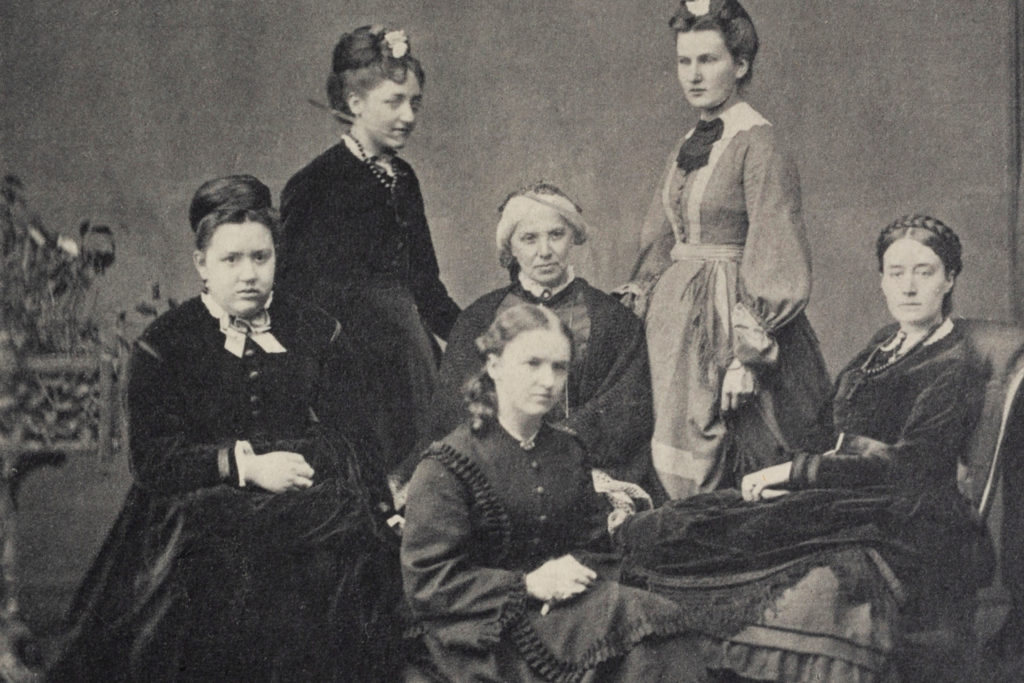Dr Maria Ubiali – Mathematician

Dr Maria Ubiali’s journey into particle physics started as a 16-year old in Milan, with a fascination for art and a frustration with her artistic abilities. But, babysitting the children of a physicist one evening, he said to her, ‘a physicist is an artist who can’t draw’. And that, Maria said, was ‘when physics started to become interesting’.
Maria saw the art within mathematics. ‘I immediately understood that what was most artistic for me was the mathematical description of the laws of physics’, she explains. ‘It was amazing to see how ideas of symmetry, of beauty, of simplicity, could translate into mathematical and testable predictions in physics.’
Today, Maria seeks to understand some of the greatest questions of the universe, by studying its smallest particles. Particle physics, she says, ‘is really answering the fundamental questions about what are the elementary building blocks of nature, and what are their fundamental interactions with each other.
‘What we think happened after the big bang, [is that] matter was produced in its elementary state, and then we started to have complex structures. At the beginning we only had free quarks, which started to get together and create protons and neutrons; protons and neutrons get together and create the atoms; the atoms aggregate to create matter as we see it now. So if you go down to very very tiny things, you see back in time to the first picosecond of the beginning of the universe.’
She convenes several research groups at CERN, where they collide protons at a speed close to the speed of light. Their experiments reproduce a state of energy and matter similar to that shortly after the Big Bang.
Her groups bring together theorists and experimentalists in dialogue: ‘We suggest that they measure some quantity, and they ask us to help interpreting the data they collect – it’s fascinating.’
The theorists predict the results of an experiment, using the standard model of particle physics. Maria’s unexpected problem? The predictions are matching up too well with results.
‘What’s fascinating at the moment is that the predictions, which come from the standard model of particle physics, work extremely well – but we know this standard model cannot be the ultimate theory of our universe, because it doesn’t answer some fundamental questions like “what is dark matter made of?” “or why do neutrinos have a mass?”. What I’m working on is a framework that can help us interpret globally all deviations from the standard model that we might find.’
The groups are aiming to find experimental deviations from their theoretical predictions, revealing the effects of as yet unknown elements of physics. By identifying the deviations – the dog that didn’t bark in the night-time, as Sherlock Holmes might put it – theorists will be able to point at where the standard model is incomplete. Maria dreams of seeing, for example, ‘new particles that “live” at a hundred times the energy we have available in the LHC, but still create some clear evidence of their presence at the scale we can see now.’
However, the deviations from theory are simply not as large as were originally expected – and so far, they remain invisible.
Maria explains the new approach the group is now taking. ‘A lot of emphasis is on precision physics, because the experiments at CERN are doing so well that we can now measure to a precision that we couldn’t even dream ten years ago. And, of course, deviation is more evident if we have precise numbers for the theory and precise numbers for the experiment.’
The result is a race of technologies. The theoreticians are working to refine their mathematics, to create ever more sophisticated, precise predictions. At the same time, the experimenters are refining their tools.
Maria herself is taking on the challenge of refining predictions through Artificial Intelligence techniques and machine learning, to have a better understanding of the structure of the colliding protons, in terms of quarks and gluons. This is something she started during her PhD, and is now reaching a ‘very high level of sophistication’. The results are highly promising. And with this, alongside the advances in experimental technique, ‘we will be able to sift nature to an unprecedent level’, she says, smiling.
However, for all her far-sighted planning, Maria knows that in science, the unexpected is always crucial. ‘Progress in maths and physics is never a linear thing, it’s always something that comes out of surprising events.’
You can read about Dr Maria Ubiali’s work in more detail on the ‘Physics beyond the standard proton’ website.






